
Capturing Contrast: A Black and White Journey Through Poole and Cologne on 35mm Ilford FP4Plus Film
In this black and white photographic journey, I delve into the captivating realm of black and white photography as I share the narrative of my lens capturing the nuanced beauty of two distinct geographical landscapes—Poole, England, and Cologne, Germany. The essence of this blog is steeped in the timeless allure of monochromatic imagery, an exploration of shadows, contrasts, and emotions that unfold in shades of grey.
Embarking on this artistic journey, the canvas of choice is the venerable 35mm Ilford FP4 Plus film, a medium revered for its ability to transform ordinary scenes into captivating visual stories. As we traverse through the streets of Poole and Cologne, draped in the melancholy embrace of dark winter clouds, the film becomes not just a tool but a co-storyteller, lending a unique character to each frame.
Amidst the technical intricacies lies a deeply personal connection and an unwavering passion for photography. This introduction unravels my motivations, inviting you to witness the world through my lens—a lens coloured by experiences, emotions, and an unyielding commitment to freeze fleeting moments in the monochrome tapestry of time. Join me on this voyage where every click echoes not only the click of the shutter but the heartbeat of a photographer’s soul.
The Art of Black and White Photography

In the tapestry of visual storytelling, the art of black and white photography remains timeless and enchanting. A canvas stripped of colour, it invites viewers to a world where shades of grey transcend mere absence and morph into a language of emotions. This section delves into the artistry behind black and white imagery, exploring its enduring appeal that transcends fleeting trends and captures the essence of a moment with profound simplicity.
Shooting on 35mm film adds a layer of authenticity and nostalgia to the craft. The grainy texture and analog aesthetics of film photography present both advantages and challenges. The tangible connection to each frame, the unpredictability of film, and the finite number of exposures force a mindful approach, demanding a deeper understanding of composition and light. The process becomes a deliberate dance with the environment, as each click is a commitment to the art form.
Enter Ilford FP4Plus, a photographic emulsion that becomes the storyteller’s ink on this monochromatic journey. This film, renowned in the realm of black and white photography, possesses unique characteristics that elevate the visual narrative. With a nominal sensitivity of ISO 125, it thrives in capturing intricate details and subtle tonal gradations, making it an ideal companion for storytelling in shades of grey. The film’s fine grain structure ensures a crisp, sharp rendition, while its wide exposure latitude allows for creative experimentation, pushing the boundaries of contrast and shadows.
As we embark on this exploration, the Ilford FP4Plus film becomes more than a tool; it becomes a collaborator, influencing the mood, texture, and narrative of each photograph. Together, the art of black and white photography, the challenges and advantages of 35mm film, and the unique qualities of Ilford FP4Plus weave a visual symphony that transcends the limitations of colour and speaks a language that resonates through time and emotion.
Cloudy Dark Winters Day
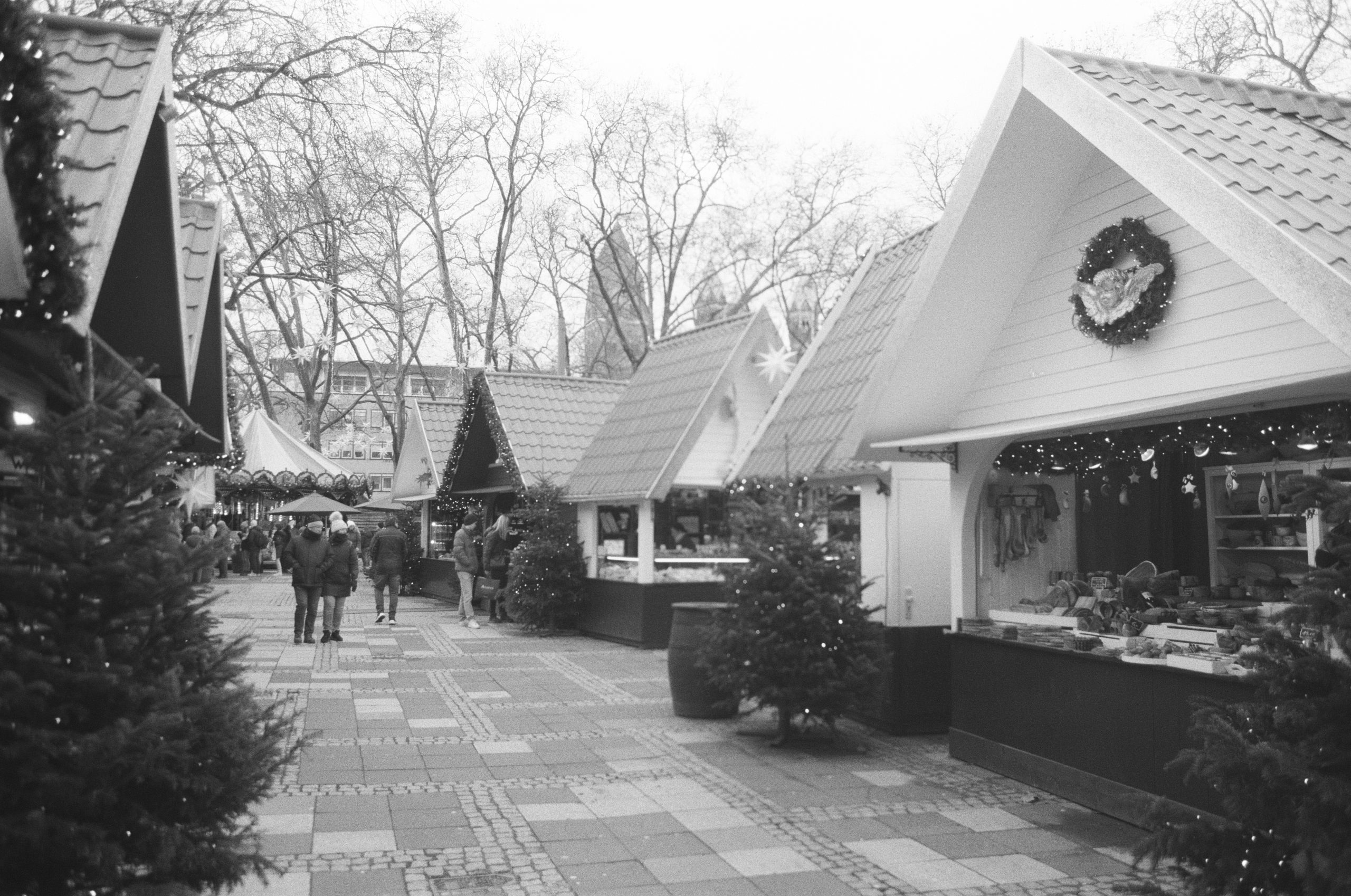
The atmospheric stage is set against the backdrop of cloudy dark winter days, where the interplay of weather conditions becomes a pivotal character in the visual narrative. Weather, with its ever-changing temperament, is a potent force shaping the essence of each photograph. This section explores the profound impact of these atmospheric conditions on the art of storytelling through the lens.
Cloudy days, with their diffuse light and muted tones, are often viewed as a canvas ripe for photographic exploration. Here, the decision to embrace the obscurity of clouds is intentional—an artistic choice to infuse drama and mood into the captured moments. The soft, enveloping light of overcast skies becomes a natural diffuser, eliminating harsh shadows and revealing textures in a gentle, nuanced manner.
The weather’s influence on the final outcome of the photos is transformative. The absence of direct sunlight on these dark winter days casts a contemplative veil over the landscapes of Poole, England, and Cologne, Germany. Moody skies deepen contrasts, lending an ethereal quality to architectural details and natural elements alike.
The cloud cover becomes a collaborator, emphasising the emotive power of each frame, creating a cinematic experience where the weather isn’t just a backdrop but an integral part of the visual poetry, etching the scenes with a melancholic beauty that only a winter’s day can provide.
Geographical Locations
Poole Quay, England
Nestled along the picturesque shores of the English Channel, Poole holds a special place in my heart. It’s not just a location; it’s a repository of memories, a canvas where my photographic journey finds roots. Childhood summers spent exploring its cobblestone streets and maritime wonders have forged a deep connection. Returning to Poole, especially in winter, is a nostalgic pilgrimage to capture the essence of my personal history.
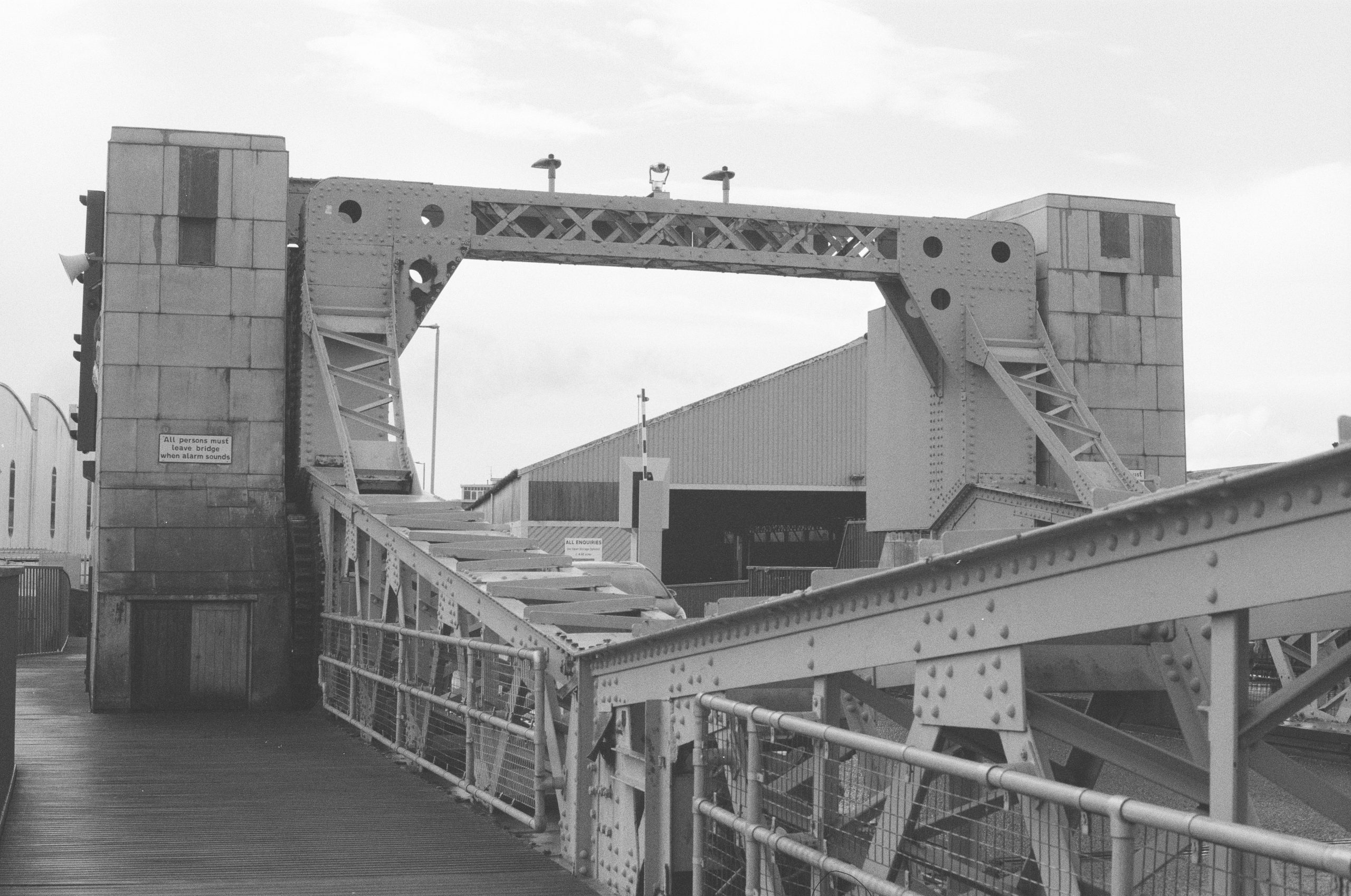
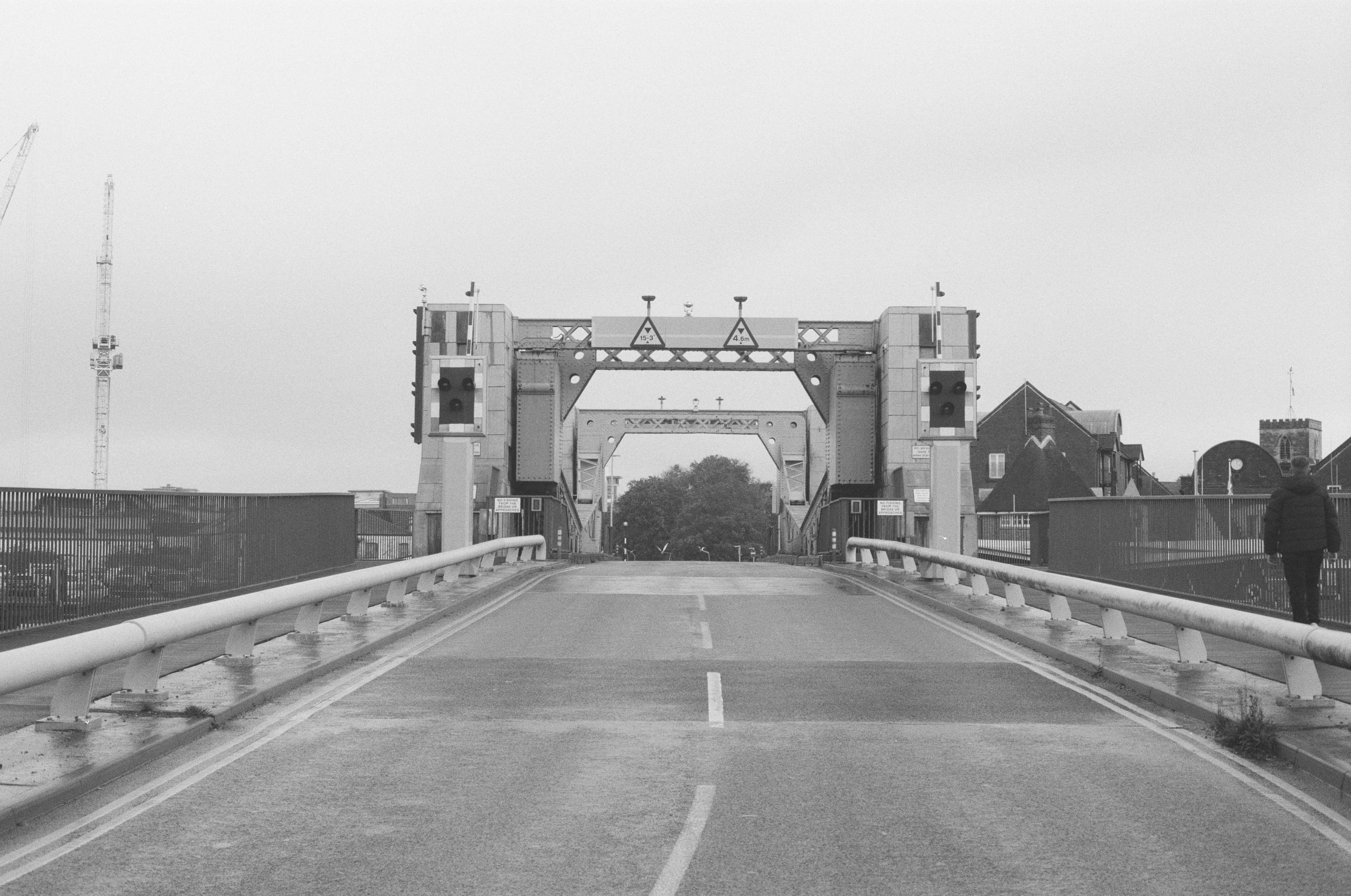
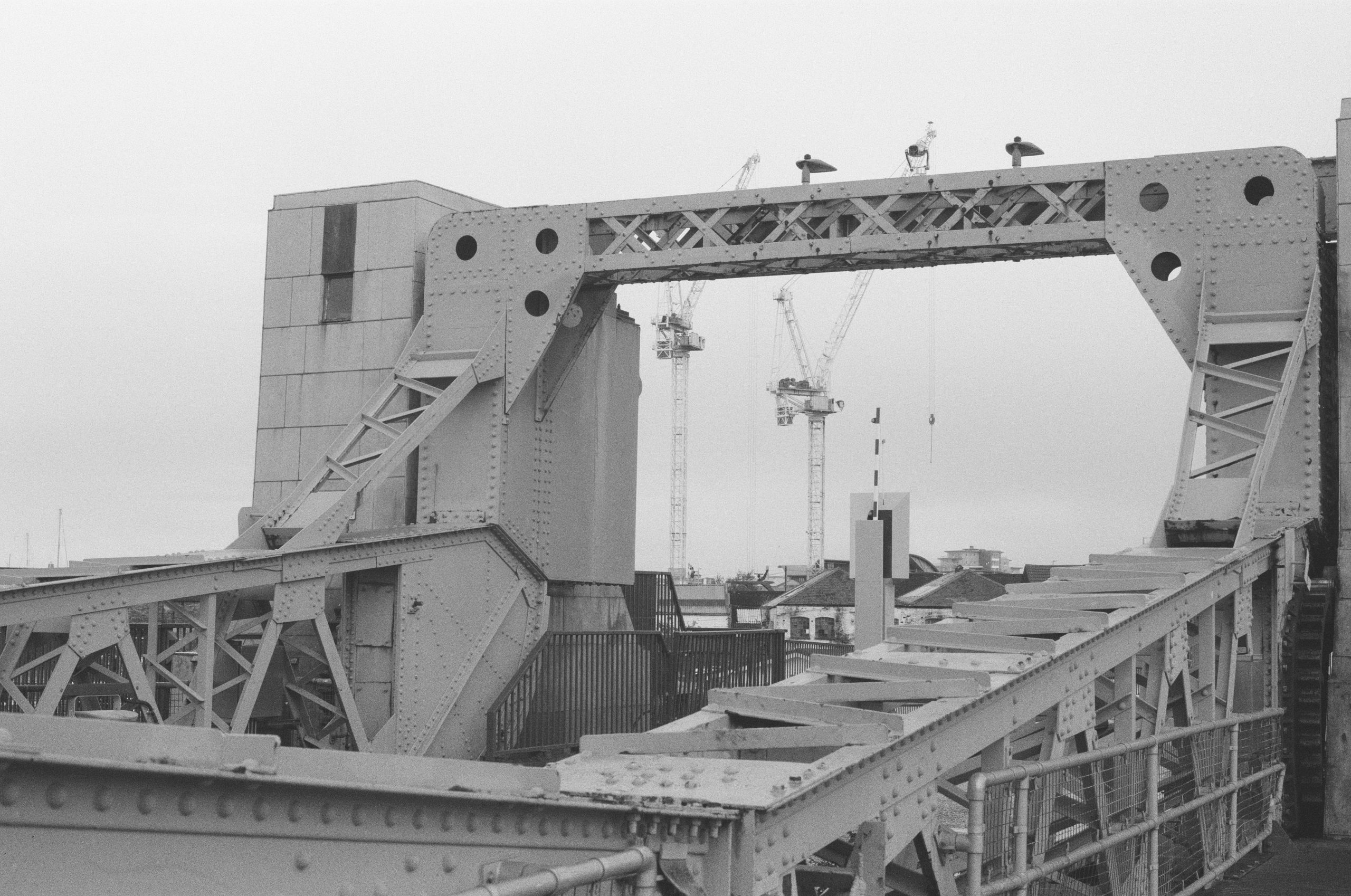
Poole Quay, with its medley of historic buildings and dockside charm, becomes the focal point of my lens. The North side of the harbor, lined with weathered industrial structures and naval remnants, offers a visual feast. The cobbled streets echo tales of maritime endeavors, while the looming silhouettes of ships contribute to the town’s industrial narrative. Each corner tells a story – from the symphony of seagulls by the quay to the stoic presence of naval vessels.
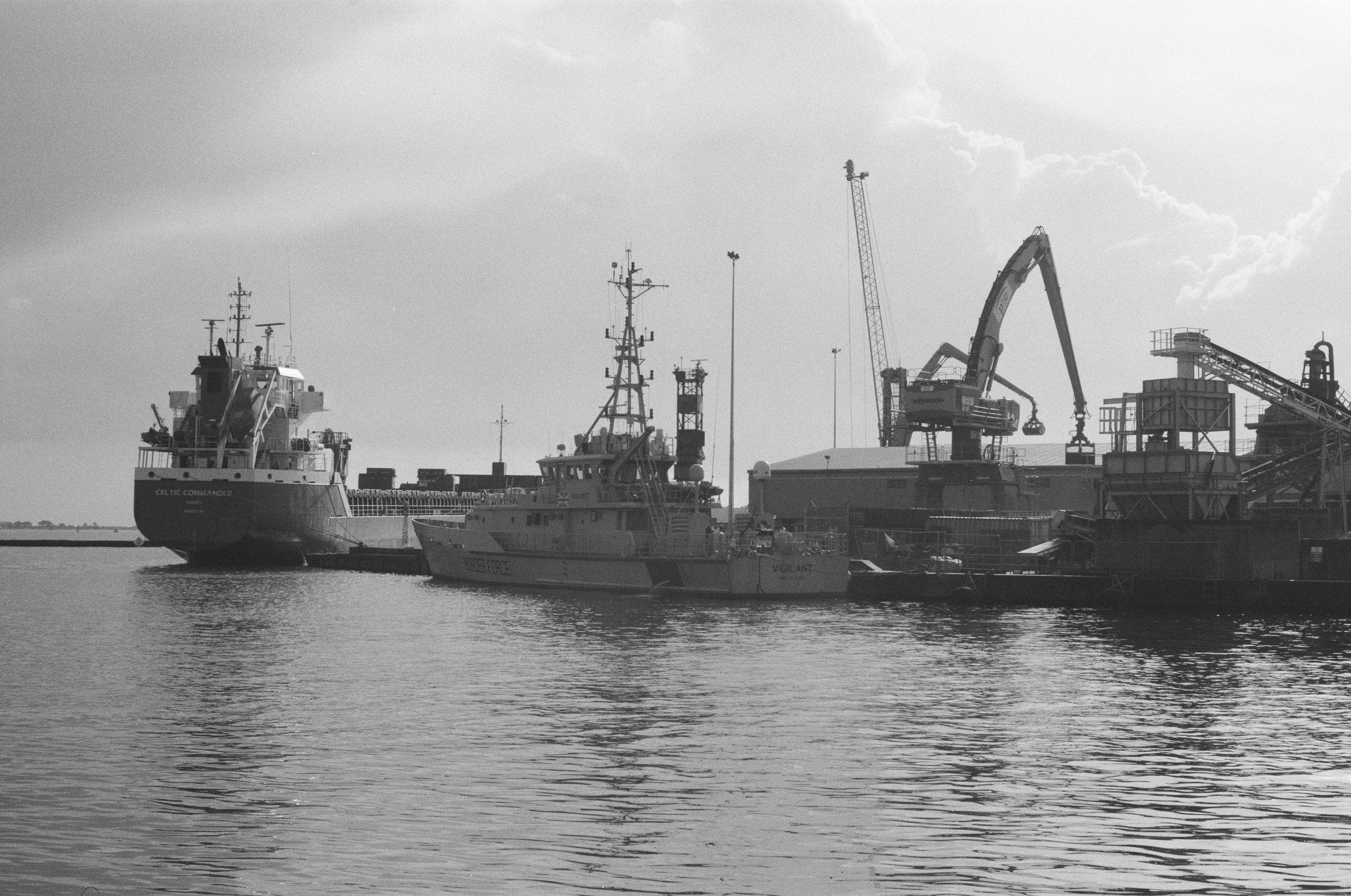
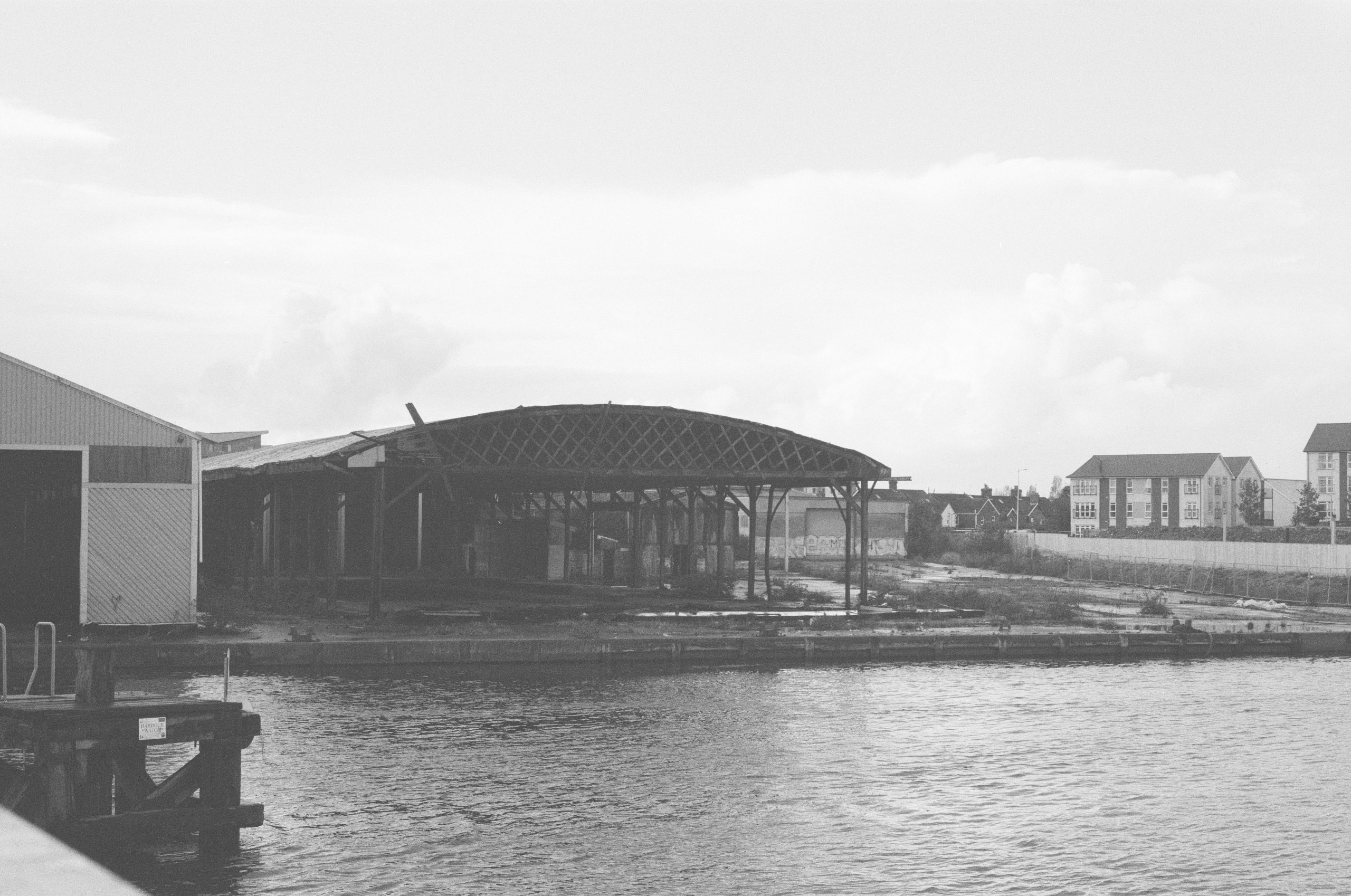
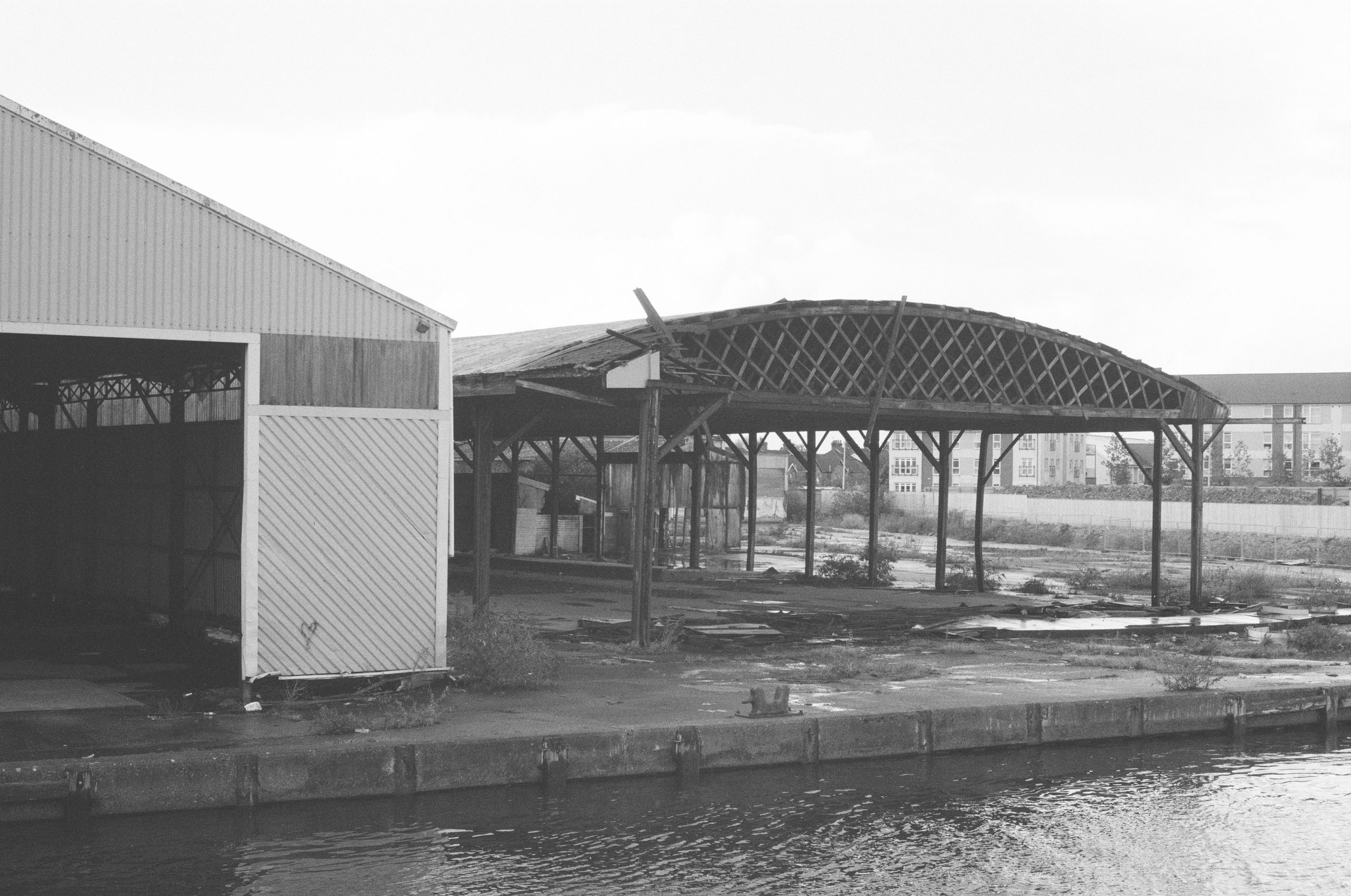
The decision to document Poole on a dark winter day is deliberate. The industrial and naval elements come alive under the muted light, unveiling a character that is both enigmatic and raw. The play of shadows on the aged brick facades creates an atmospheric quality, accentuating the town’s historical significance. The naval vessels, standing stoically against the winter backdrop, evoke a sense of resilience and strength. The juxtaposition of industrial structures against the natural elements paints a captivating narrative, where the past and present coalesce into a visual symphony of contrasts.
Cologne, Germany
Crossing borders into Cologne, Germany, marks a departure from familiarity into the embrace of a different cultural tapestry. The inspiration behind this visit was twofold – the allure of Cologne’s renowned Christmas Markets and the desire to capture the city’s unique spirit during the festive season. The juxtaposition of medieval architecture and the festive market atmosphere offered a captivating tableau for my lens.


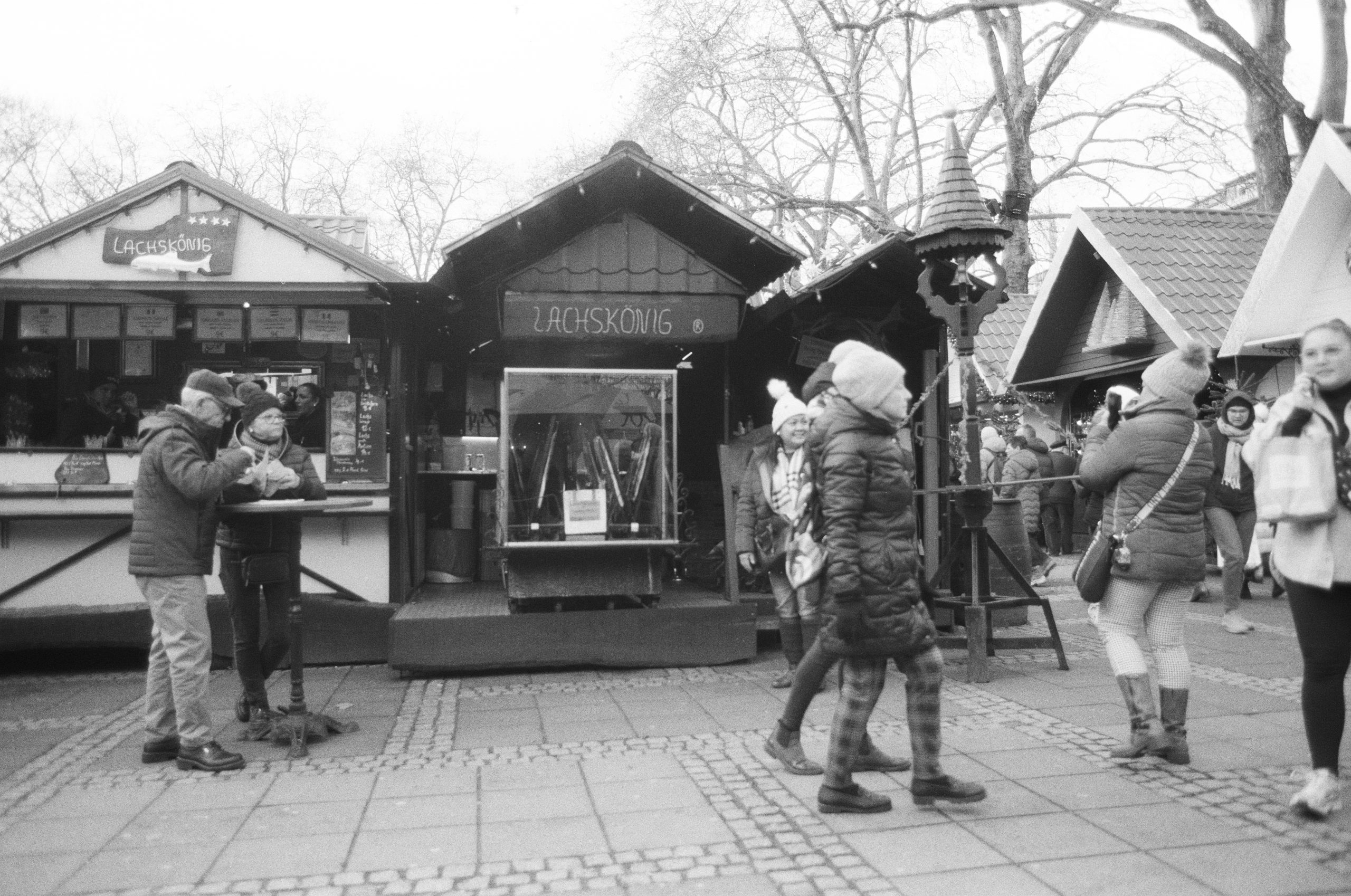
Shooting in Cologne presented a delightful challenge, a departure from the familiar landscapes of Poole. Navigating the narrow streets adorned with centuries-old structures required an adaptation of perspective. The challenge lay in harmonising the historical charm with the bustling energy of the Christmas Markets. Yet, this unfamiliarity birthed opportunities for fresh perspectives and innovative compositions. The city’s cultural nuances, expressed through the market’s colours and the warmth of its people, added layers of complexity to each frame. The challenge of capturing the transient magic of the markets became an exploration of cultural vibrancy against a backdrop of architectural timelessness.
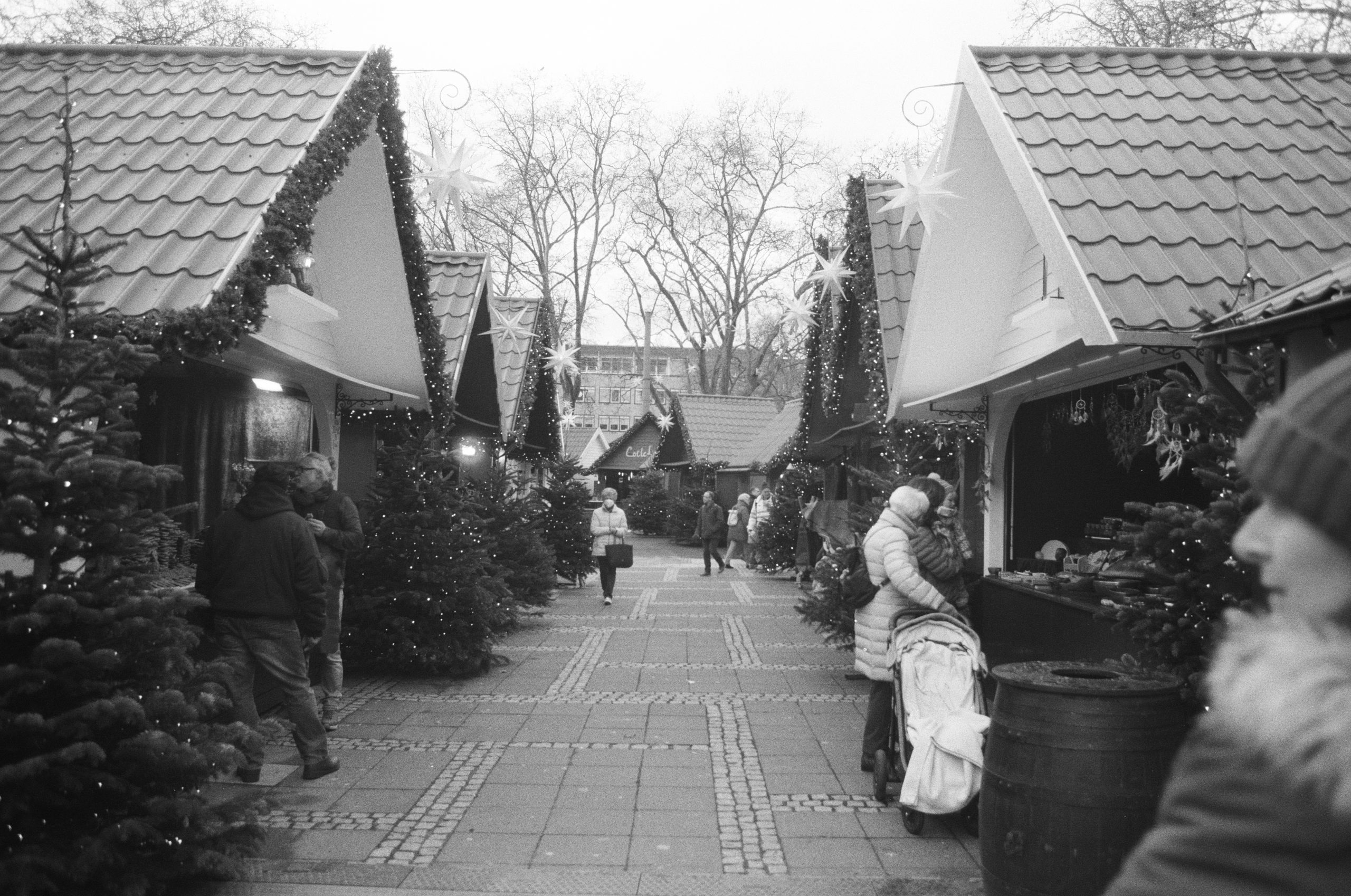
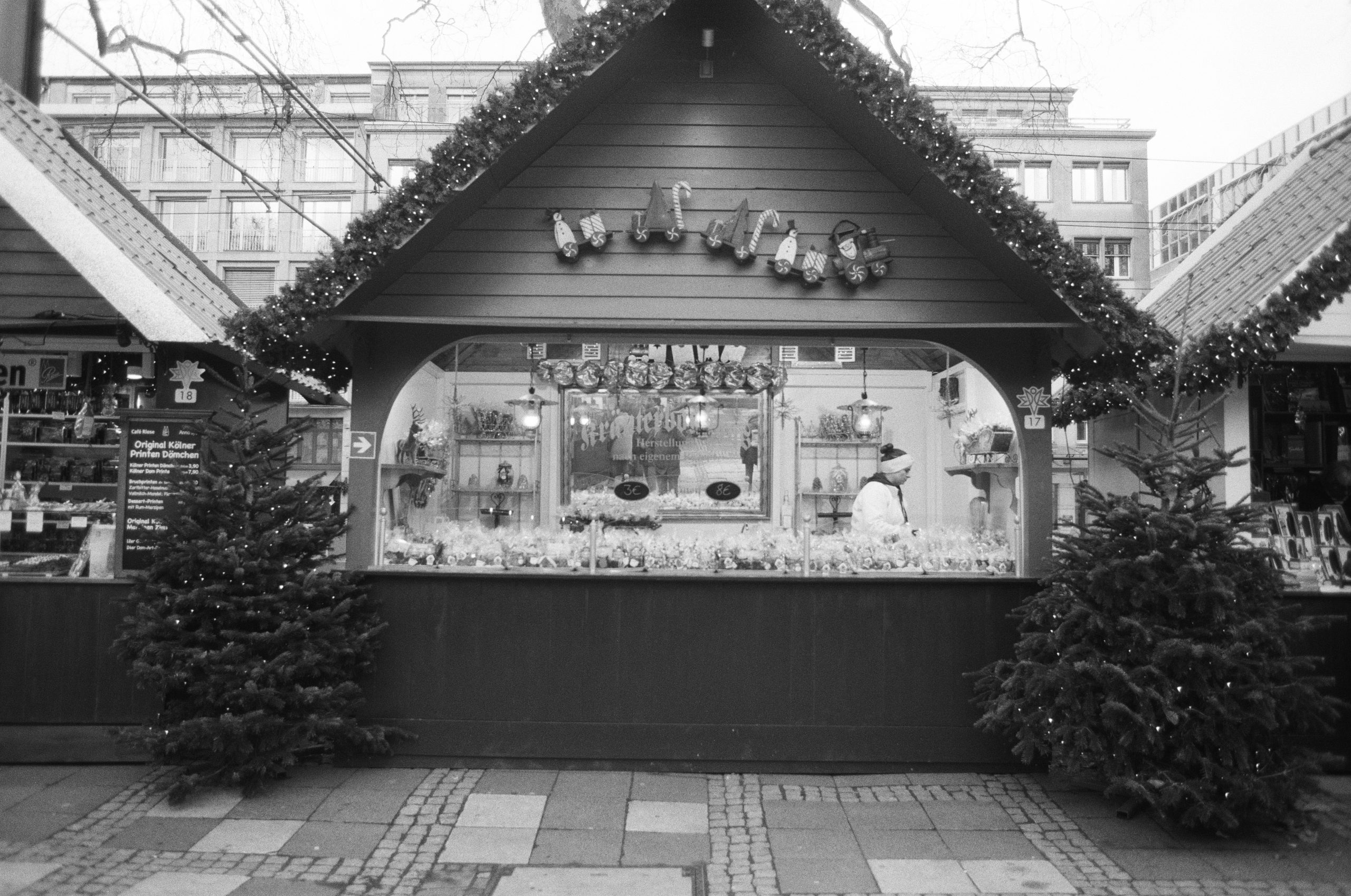
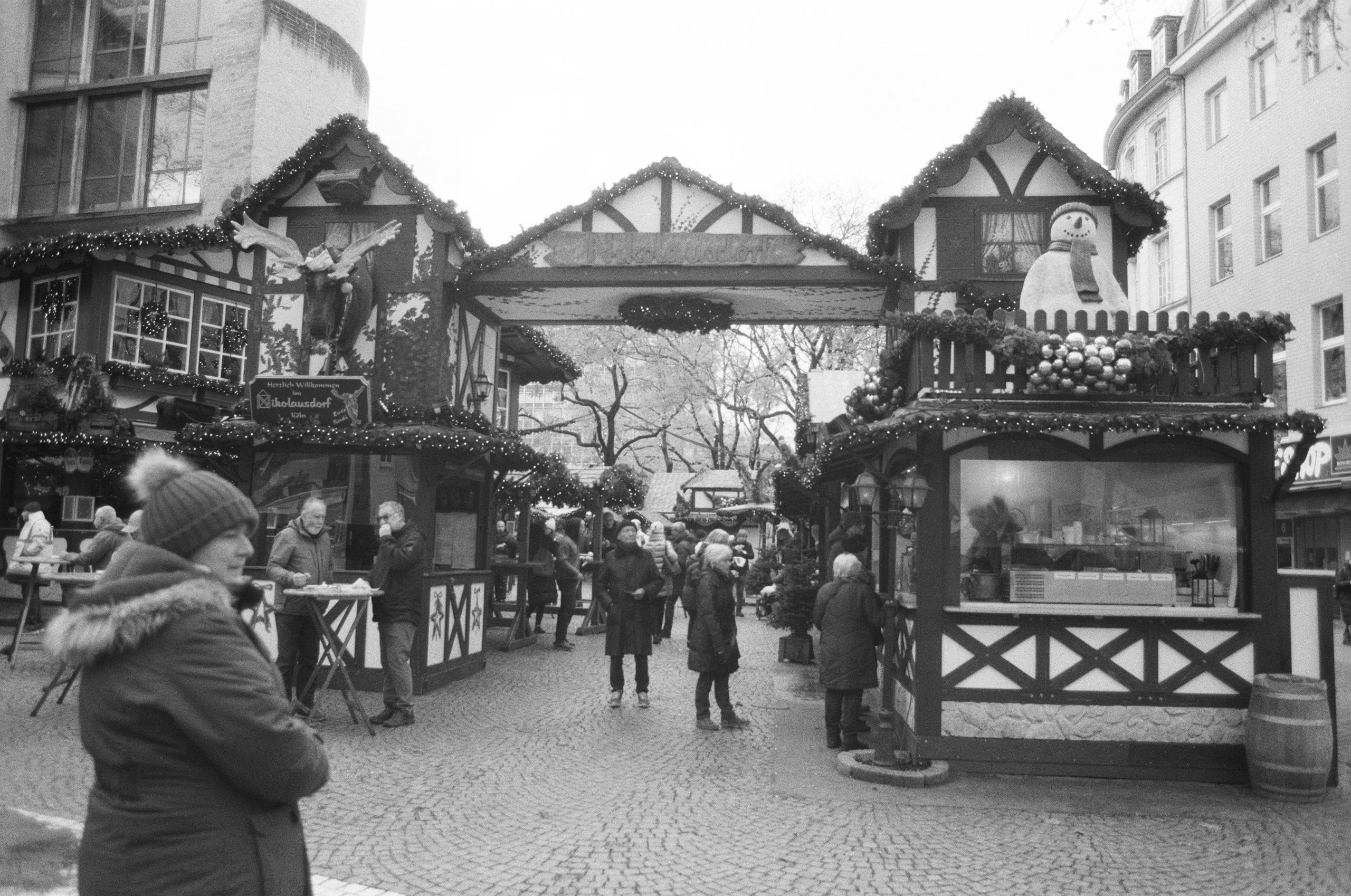
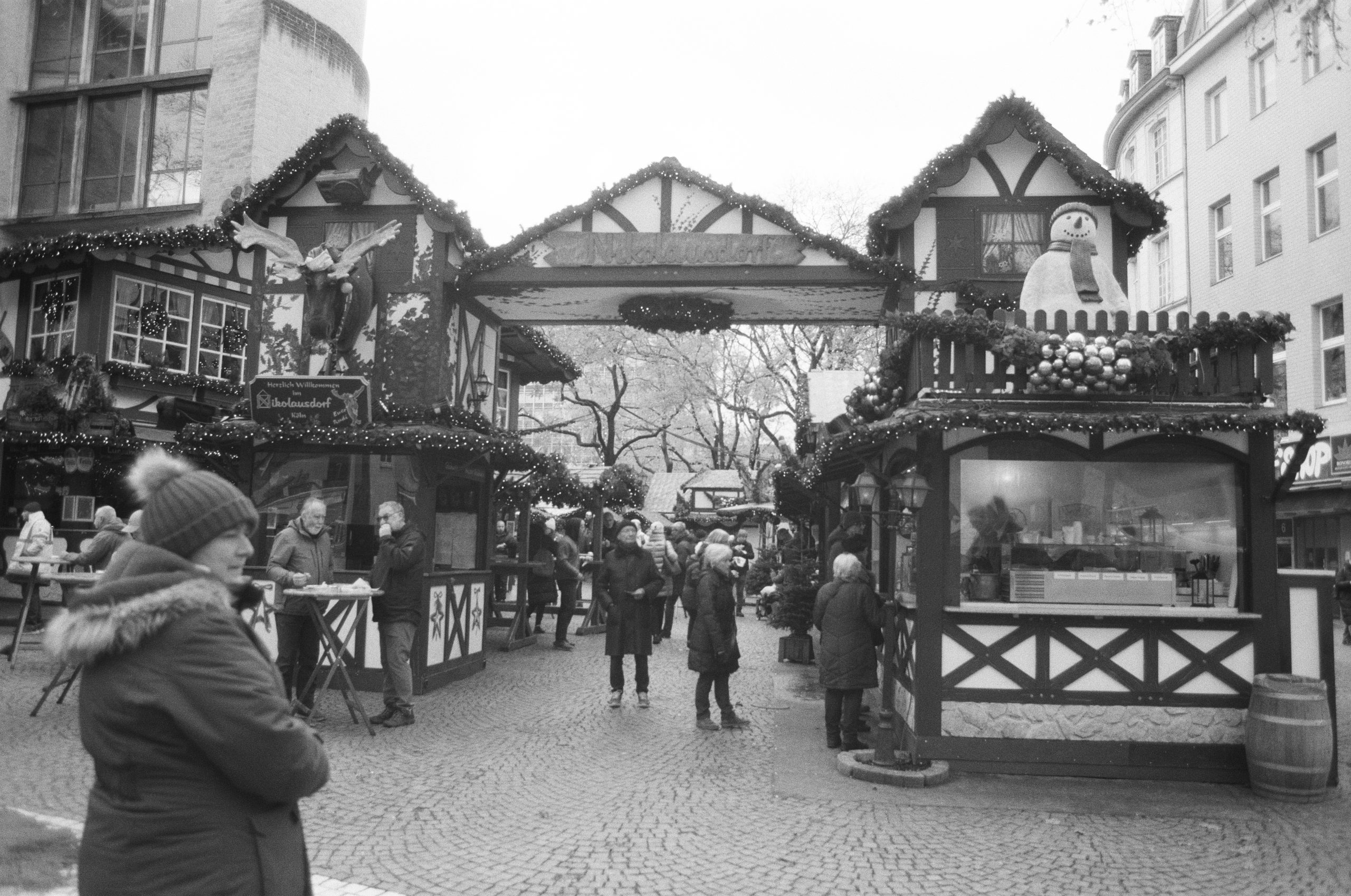
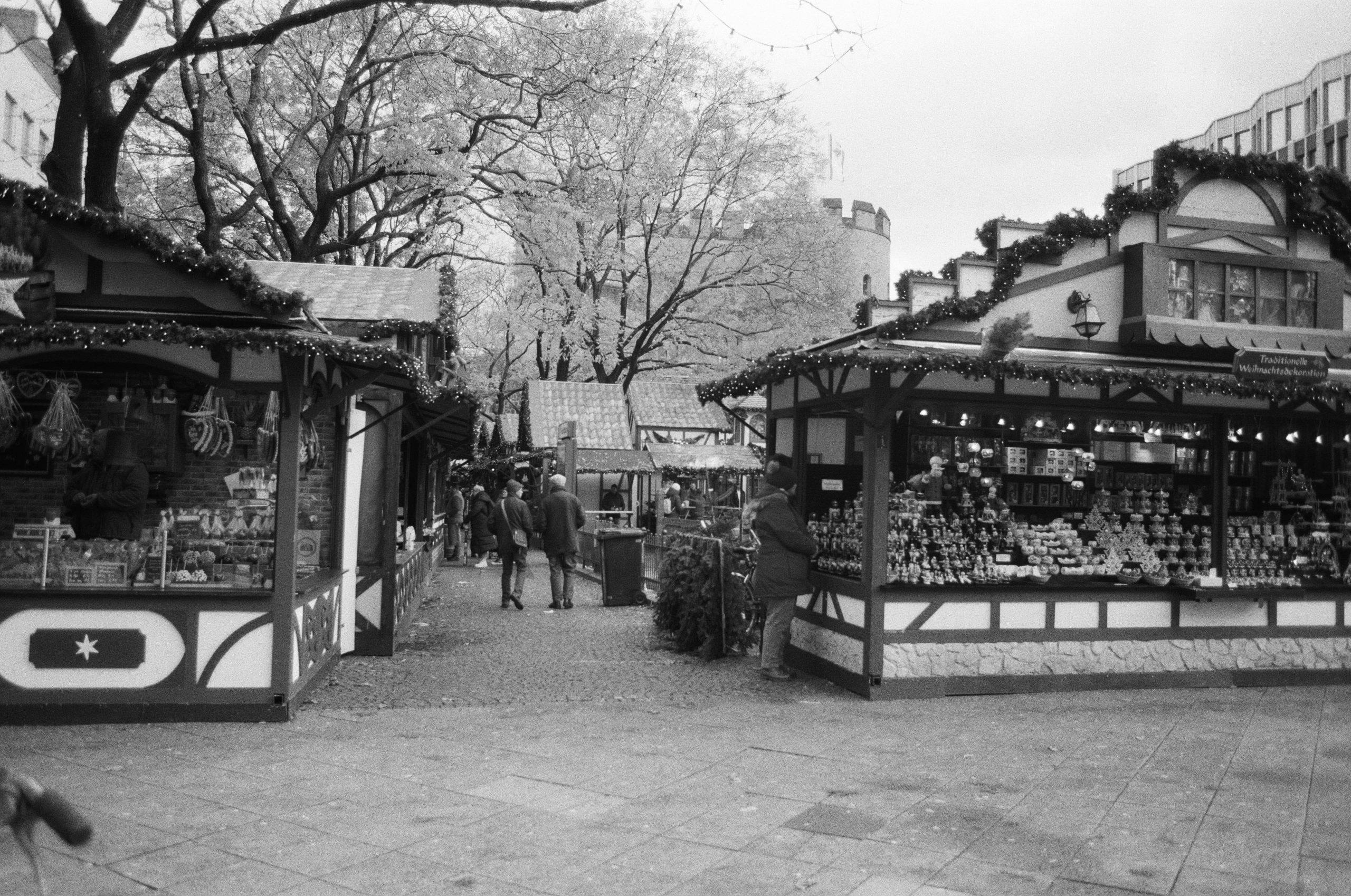

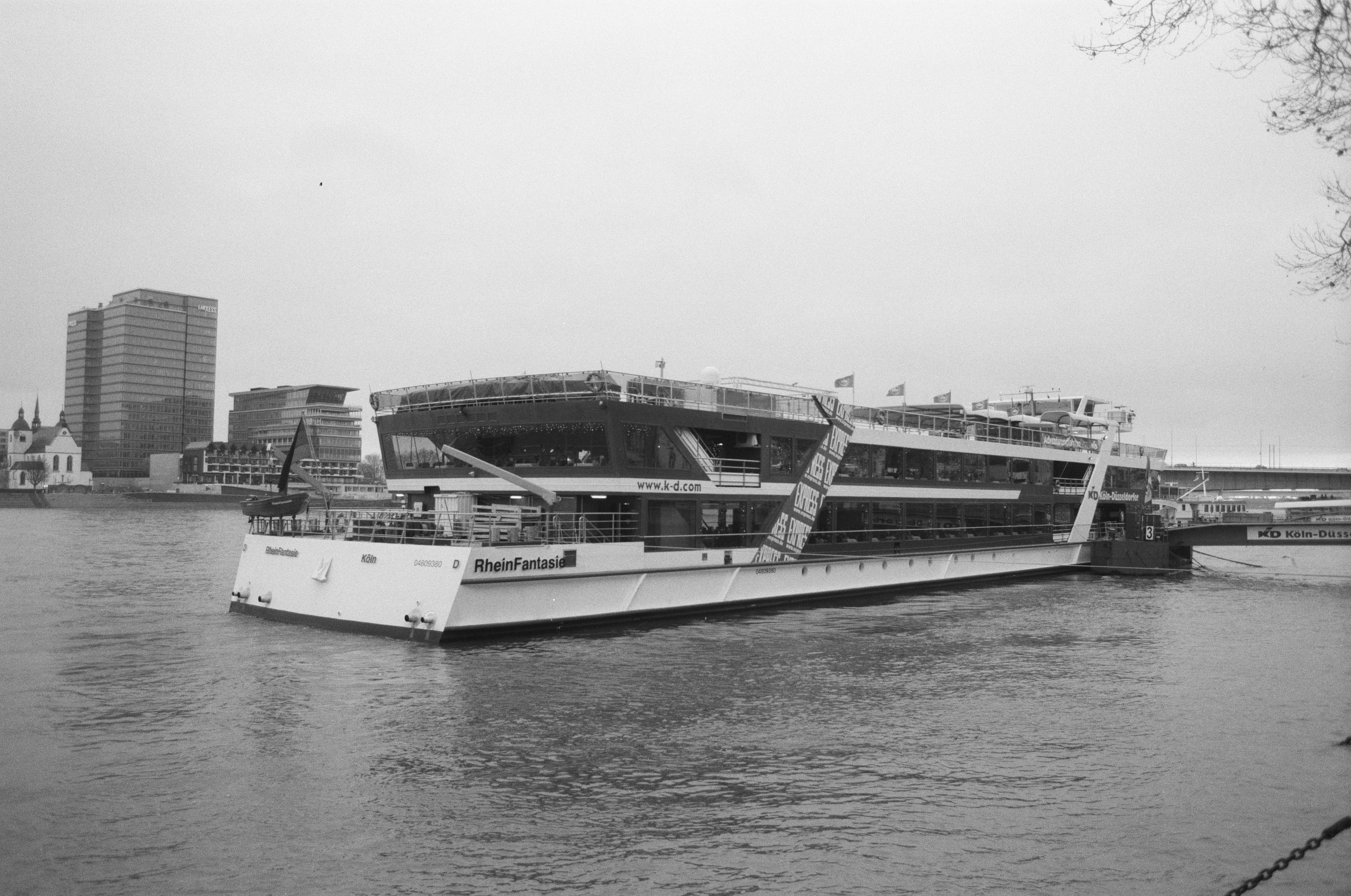
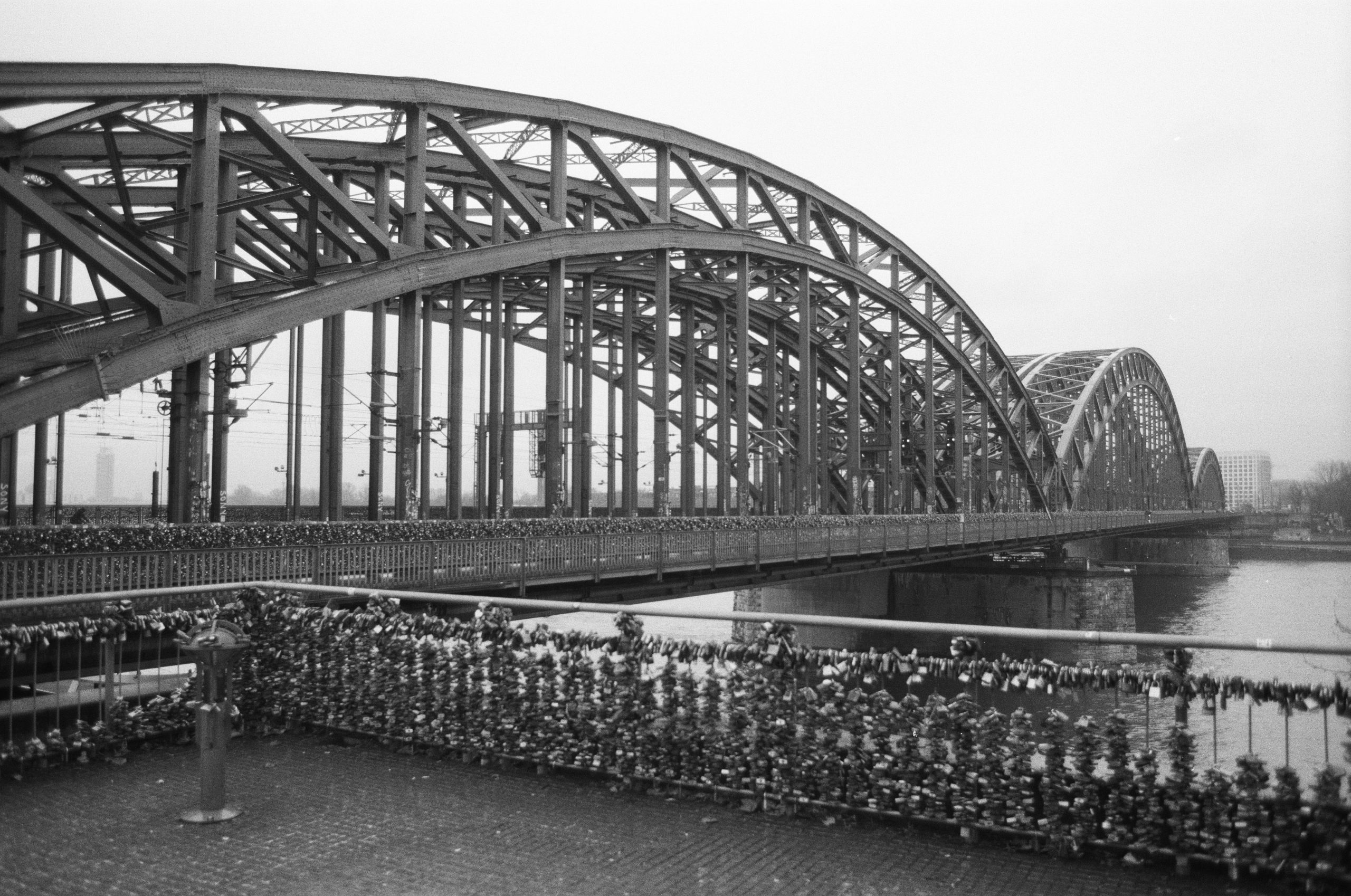
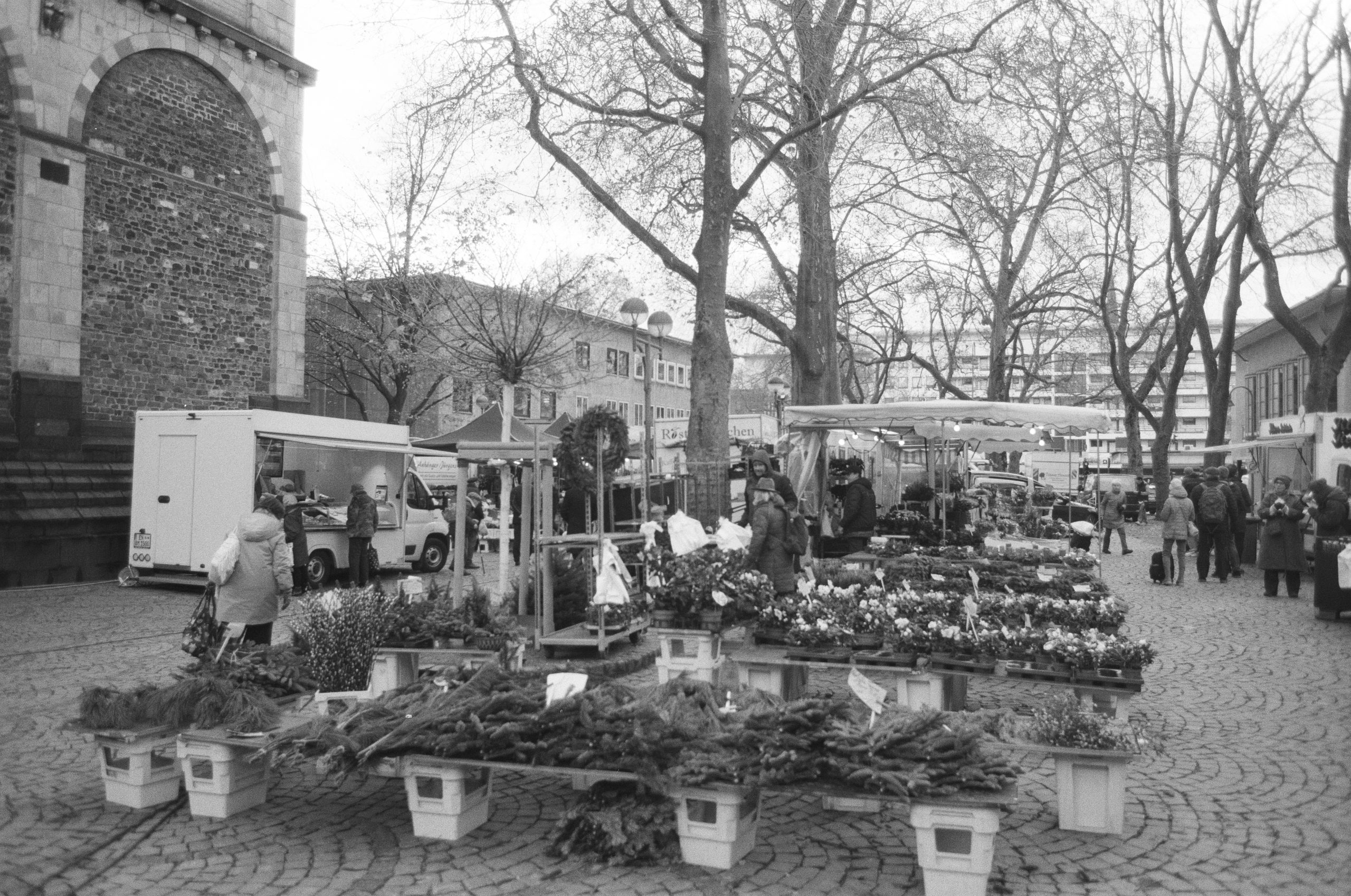
In essence, the geographical chronicles unfold as a dual narrative – Poole, with its maritime history etched in industrial and naval tones, and Cologne, a city embracing the festive fervor of Christmas, painted against a canvas of medieval grandeur. Through these distinct locales, the photographs encapsulate not just geographical landscapes but the rich tapestry of history, culture, and personal connection that define the essence of each captured moment.
Ilford FP4Plus Film: A Photographer’s Choice
In-depth Discussion of the Film’s Characteristics
Ilford FP4Plus, a stalwart in the world of black and white photography, unveils a symphony of characteristics that elevate it beyond a mere medium of capture. With a nominal sensitivity of ISO 125, this film boasts a fine grain structure that translates into images with exceptional detail. Its wide exposure latitude offers a photographer the freedom to experiment with lighting conditions without compromising on the quality of the final result. This inherent flexibility makes it an ideal companion for shooting in various settings, from the moody atmospheres of cloudy winter days to well-lit urban landscapes.
The Role of Ilford FP4Plus in Enhancing the Monochrome Aesthetic
Ilford FP4Plus plays a pivotal role in crafting the monochromatic aesthetic that defines the essence of this photographic journey. The film’s ability to capture intricate details and subtle tonal gradations contributes to the richness of each frame. In the absence of colour, the film becomes a conduit for storytelling through textures, shapes, and contrasts. It transforms ordinary scenes into visual poetry, adding depth to shadows and highlighting the nuance of every element within the frame. The film’s characteristic tonality becomes a language, allowing the photographer to convey emotions and narratives in shades of grey.
Personal Experiences and Preferences Working with This Film
Working with Ilford FP4Plus transcends the technical; it becomes an intimate dance with the medium. The tactile nature of loading the film, the deliberate choices in exposure, and the anticipation during development create a symbiotic relationship between the photographer and the emulsion. The film’s forgiving nature permits a degree of experimentation, encouraging creative expression without fear of losing the essence of the captured moment. Personally, the deep blacks, the fine details, and the nuanced tonality of Ilford FP4Plus resonate with my artistic vision, making it a constant companion in my photographic endeavors.
The Power of Contrast
Emphasising the Role of Contrast in Black and White Photography
Contrast is the heartbeat of black and white photography, breathing life into scenes that dance between light and shadow. It defines the visual impact, drawing the eye to focal points, and sculpting the narrative within a frame. The play between highlights and shadows transforms two-dimensional images into multidimensional stories, enhancing the overall depth and drama.
How the Choice of Film and Weather Conditions Contributed to Contrast
Ilford FP4Plus, with its unique characteristics, becomes an instrumental tool in manipulating contrast. Its fine grain structure preserves details even in areas of high contrast, allowing for a delicate balance between light and dark. When coupled with the natural drama of a cloudy winter day, the film accentuates the atmospheric contrast. The diffused light softens harsh shadows, while the inherent tonality of the film deepens the richness of dark areas. The choice of film and weather conditions thus becomes a symbiotic relationship, each enhancing the other in the pursuit of a contrast-rich visual narrative.
In the visual narrative of Poole and Cologne, the showcased photographs become a testament to the power of contrast. From the sharp lines of industrial structures against muted skies to the interplay of light and shadow in the narrow streets of Cologne, each image paints a story shaped by the dynamic dance of contrast. The carefully selected frames illustrate how the choice of Ilford FP4Plus film, coupled with the atmospheric conditions, has been harnessed to create impactful compositions that breathe life into the concept of chiaroscuro—a play of light and dark that defines the soul of black and white photography.
Conclusion
As the photographic journey through Poole, England, and Cologne, Germany, comes to a poignant close, the lens has not merely captured images but woven together a narrative of history, emotion, and personal connection. From the maritime echoes of Poole Quay to the festive charm of Cologne’s Christmas Markets, each frame encapsulates a moment suspended in time. The geographic chronicles unfold as a visual symphony, celebrating the beauty hidden in the everyday and the extraordinary tales etched into the landscapes.
The 35mm Ilford FP4Plus film, akin to a trusted companion on this artistic voyage, emerges as a defining element in shaping the visual narrative. Its fine grain structure, wide exposure latitude, and unique tonality have breathed life into each frame, adding a layer of authenticity to the storytelling. The deliberate choice of this film was not just technical; it was an artistic commitment to capturing moments with a timeless allure. In reiterating its significance, it becomes a testament to the enduring charm of analog photography in the digital age.
Beyond the confines of pixels and colour, the essence of black and white photography lies in its ability to distill moments to their emotional core. It invites the audience to appreciate the beauty of simplicity, to perceive the world through a different lens that transcends the distractions of colour. In every photograph, there is an invitation to pause, reflect, and find the extraordinary in the ordinary. The monochromatic palette becomes a canvas where stories unfold, and emotions speak louder than words. The audience is encouraged to immerse themselves in this realm, to see the world anew, and to discover the profound beauty that lies in the shades of grey.
Call to Action
For those who have been spectators to this visual journey, the call to action is an encouragement to step into the world of black and white photography. Embrace the simplicity and complexity that this art form offers. It’s an invitation to pick up a camera, explore the interplay of light and shadow, and discover the stories waiting to be told in the absence of colour. Let the journey through Poole and Cologne be an inspiration to embark on one’s photographic odyssey, guided by the timeless allure of monochrome.
To those intrigued by the tactile allure of film photography, practical tips become a guiding light. From selecting the right film stock to mastering exposure techniques, the invitation is extended to delve into the technical nuances that transform a photograph from a moment captured to a visual story told. Embracing the idiosyncrasies of shooting on 35mm film becomes a gateway to unlocking the true potential of analog photography, fostering a deeper connection with the art form.
The conclusion culminates with an open invitation for readers to become collaborators in this artistic dialogue. Share experiences, insights, and the stories behind their own black and white photographs. In a digital age that often prioritises the instantaneous, this invitation is a beckoning to connect on a deeper level, to build a community of storytellers who appreciate the nuanced beauty of monochromatic moments. Through shared experiences, the tapestry of black and white photography continues to evolve, reminding us that every click of the shutter is not just an isolated act but a part of a larger, collective narrative waiting to be explored and celebrated.
FAQs
1. Why did you choose to shoot on 35mm Ilford FP4Plus film?
- The choice of 35mm Ilford FP4Plus film was deliberate, driven by its unique characteristics. The film’s fine grain structure, wide exposure latitude, and distinctive tonality added depth and authenticity to each frame, aligning perfectly with the artistic vision of capturing timeless moments in black and white.
2. How did the weather conditions impact the photography in Poole and Cologne?
- Shooting on cloudy dark winter days added a layer of drama and mood to the photographs. The diffused light softened harsh shadows and highlighted textures, contributing to the atmospheric quality of the images. The weather became an integral part of the storytelling, shaping the visual narrative in both Poole and Cologne.
3. What is the significance of contrast in black and white photography?
- Contrast is pivotal in black and white photography, defining the visual impact by playing with light and shadow. It adds depth, directs the viewer’s focus, and transforms two-dimensional images into compelling visual stories. The interplay of contrast was carefully considered and harnessed in both film choice and weather conditions to enhance the narrative.
4. How does shooting on film differ from digital photography?
- Shooting on film, particularly 35mm, introduces a tactile and deliberate approach to photography. The finite number of exposures encourages a thoughtful and mindful process. The unique characteristics of film, such as grain and colour rendition, create a distinct aesthetic that is often cherished for its authenticity and timeless appeal, setting it apart from the instant and limitless nature of digital photography.
5. What tips do you have for someone interested in exploring black and white photography?
- Begin by understanding the fundamentals of composition, lighting, and exposure. Experiment with different subjects and scenes to grasp the nuances of capturing emotion in the absence of colour. Consider shooting on black and white film to experience the tactile and deliberate nature of analog photography. Finally, embrace the simplicity of the medium and let your unique perspective shine through in every frame.
Like what you read? Fuel my next post with a coffee – hit that PayPal button and keep the caffeine flowing!
[wpedon id=77]